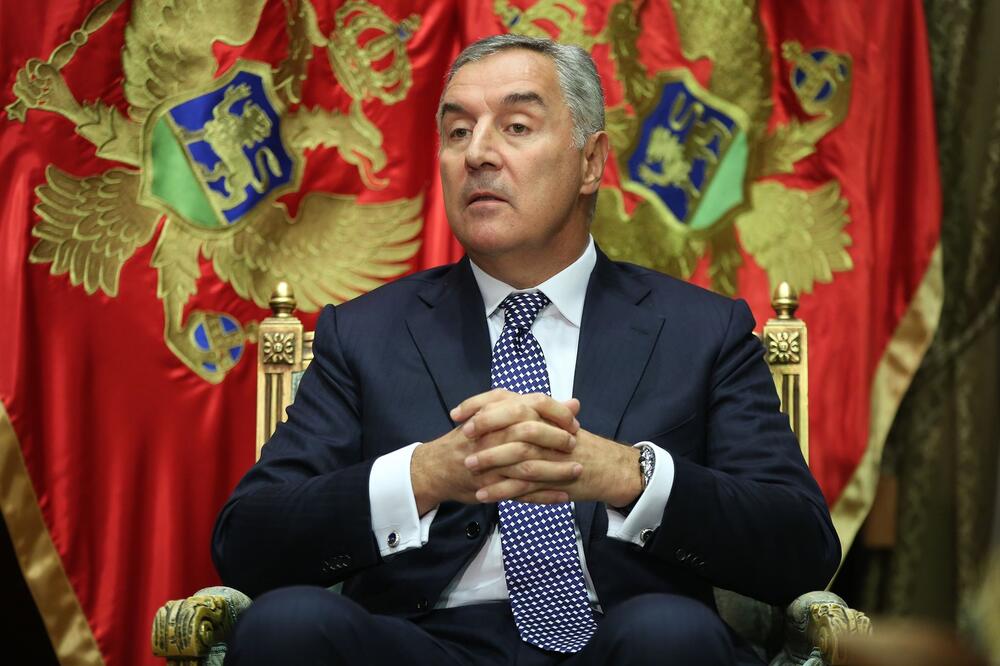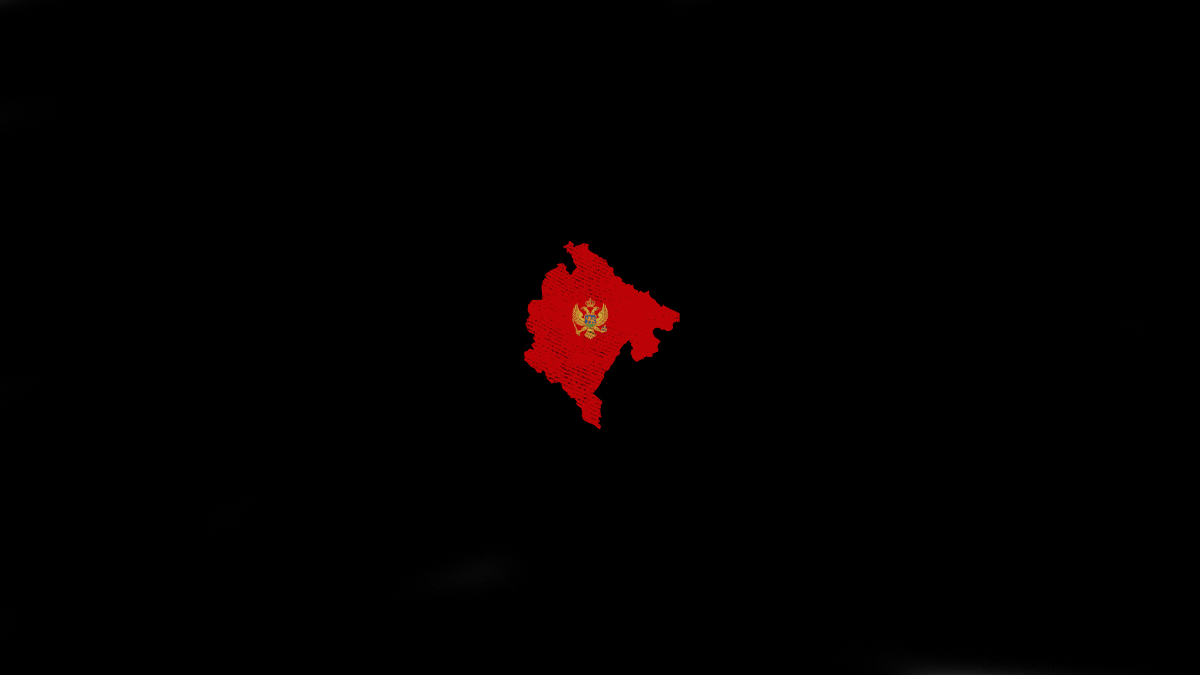The featured artwork for the Reaper Feed article on the crisis in Montenegro was designed by the highly skilled graphic designer Olivier Ballou.
During the grueling wars that ravaged the former Yugoslavia in the 1990s, Montenegro was arguably fortunate in comparison to countries like Bosnia, Croatia, and Kosovo. Whilst it was bombed several times in NATO airstrikes, Montenegro didn’t suffer the mass destruction, ethnic cleansing, and refugee crisis that its neighbors did. The country has been lucky to avoid religious conflict through a high degree of religious tolerance and diversity throughout its history. However, in 2020 it seems that luck has run out. It’s possible that a civil war is looming in the country of the black mountains. One that has the potential to become an international conflict.
Since the cooling of hostilities in the former Yugoslavia, the coastal country of Montenegro developed into an idyllic destination for the rich and famous. It’s a country I’ve visited numerous times and one I’ve always found relaxed and laid back in comparison to neighboring countries such as Albania where I usually enter from. Montenegrins are proud to show off places like Porto Montenegro where Russian billionaires moor up their megayachts or the island of Sveti Stefan where Robert De Niro opened a branch of the Nobu Sushi restaurants. But this year, Montengro’s idyllic reputation has been shattered in a string of unsettling incidents revolving around president Milo Djukanovic.

Milo Djukanovic happens to be one of Europe’s lesser-known dictators and was a close friend of Serbian President Slobodan Milosevic. Since 1991, Djukanovic has ruled Montenegro interchangeably as president and prime minister for 29 years as an authoritarian head of state. In 2010, his estimated wealth of £10 million earned him a place amongst the twenty richest world leaders according to the British newspaper The Independent. He is known to have links to the Montenegrin Mafia and the international cigarette smuggling trade worth several billion dollars annually. In 2015, the investigative journalists’ network OCCRP named Milo Djukanovic ‘Person of the Year in Organized Crime’.
In late 2019, the Djukanovic regime adopted the “Law on Freedom of Religion or Belief and the Legal Status of Religious Communities” which de-jure transfers the ownership of church buildings and estates from the Serbian Orthodox Church in Montenegro, many of them hundreds of years old, over to the Montenegrin state. This controversial law sparked various peaceful protests that saw thousands come out on the streets and many of the narrow roads through mountainous Montenegro blocked. They were described as some of the biggest protests in the history of Montenegro but were soon met with violent police crackdowns which saw protestors, journalists, and clergy alike viscously beaten and arrested.
The spread of the Coronavirus pandemic provided ample opportunity for a blanket ban on all public gatherings in Montenegro. As the protests were subdued the authorities began arresting high profile clerics of the Serbian Orthodox Church on charges of planning public gatherings. This ironically led to further protests which were stamped out with further violence from the authorities citing an apparent revival of Covid-19 cases in Montenegro. The anger is still bubbling away despite lockdown. Local police are monitoring social media and have pulled in activists for questioning over Facebook posts. You might be wondering what President Äukanović thinks of all this unrest? He bluntly called those protesting “a lunatic movement”.
In a worst-case scenario, the Montenegro Crisis will degenerate into open armed conflict between those loyal to Djukanovic and those against him. Since the Yugoslav Wars, the Balkans have been awash with millions of undeclared military-grade weapons in private ownership. Just a handful of these smuggled weapons, in particular the Zastava M70 assault rifle, were responsible for the carnage unleashed in various terror attacks in Paris during 2015. In 2017, gunpolicy.org estimated that there were around 245,000 legal and illegal weapons in the hands of civilians in Montenegro. Alarmingly, the weapons in the hands of the police and military of Montenegro combined was reported to be an inferior 13,396 firearms.

The statistics foretell that even with the loyal support of the police and armed forces, the Djukanovic regime would struggle to defeat an armed insurrection. But despite his unpopularity amongst his people, Djukanovic has some powerful friends who wish to see him stay in power but similarly powerful enemies who wish to see him ousted.
In 2017 Montenegro successfully joined NATO. A 2017 poll carried out by CISR showed that over 50% of the country’s population interviewed were against the country’s membership of NATO and viewed its overall impact on the world as negative. The majority of those polled also saw also themselves as culturally closer to Russia than to the EU as well as a positive opinion on Vladimir Putin. When asked to elaborate on the benefits of strong relations with Russia the majority of answers boiled down to viewing Russians as their Orthodox brothers, their protector throughout history, and as the only power that can “stand up to the West”.
Becoming a member of NATO will make Montenegro a legitimate target of Russian missiles.
Russian MP Mikhail Degtyarev of the Nationalist LDPR, May 2014.
In the event of armed conflict breaking out between largely Serbian opposition to the Djukanovic regime, we could expect to see a NATO peacekeeping force deploy to the country which is something the majority of the population would not take kindly to. Amongst Serbs, NATO is largely despised after the bombing campaign on Serbia during the Kosovo Crisis in 1999. In the event of an armed confrontation between NATO and anti-Djukanovic insurgents, there’s a high possibility of Serbia deploying military forces in order to protect ethnic Serbs or at the very least, irregular Serbian nationalist forces entering Montenegro with the same ideological aim. As protests against the new law spread to Serbia, thousands of Red Star Belgrade fans and various far-right Serbian groups marched on the Montenegrin Embassy in Belgrade and burned the Montenegrin flag outside.
This is where Russia comes in. In 2016 Russia was accused of attempting to overthrow the Djukanovic regime through a violent coup which conspired to take over parliament during the October parliamentary election, assassinate Milo Äukanović, and install a pro-Russian government in order to stop Montenegro joining NATO. The coup was foiled at the last minute and Russia subsequently denied involvement. 14 people including two Russian military intelligence officers, two Montenegrin opposition leaders, nine Serbian citizens were found guilty of the coup by a Montenegrin court in 2019.

As two Orthodox countries, Russia and Serbia have a close cultural and ideological bond dating back centuries. In the 1990s, post-Soviet Russia was weak and embattled with widespread corruption and internal conflicts in the North Caucasus. Thus it was unable to provide military assistance to their Serb allies during the Yugoslav Wars. A few hundred Russian mercenaries did, however, form what became known as the “Russian Volunteer Unit” and assisted the Army of Republika Srpska (VRS) during the Bosnian War. The lack of military support for their Orthodox Serb brethren in the Balkans, particularly in the late 1990s when Serbia was directly attacked by NATO and forced to surrender Kosovo, is a source of shame for many Russians. Modern Russia is no longer a weak country and is now a formidable fighting force. It’s unlikely that they will pass up the chance to defend Orthodox Serbs against NATO aggression in a renewed war in an attempt to regain the honor they felt to have lost during the 1990s. Whether via direct conflict or through proxy war methods as seen in the conflict in Eastern Ukraine.
Montenegro has a history of long rulers. King Nicholas I, whose portrait hangs in Djukanovic’s officer, ruled the country for 58 years until he was deposed. It seems that Milo Djukanovic has had a good run. In history, violent crackdowns on protestors made up of the majority of a heavily armed population has never ended well for the one in charge. It’s my hope that this crisis comes to a close without further bloodshed. If not, we may see the next global conflict erupt in the land of the black mountains.














